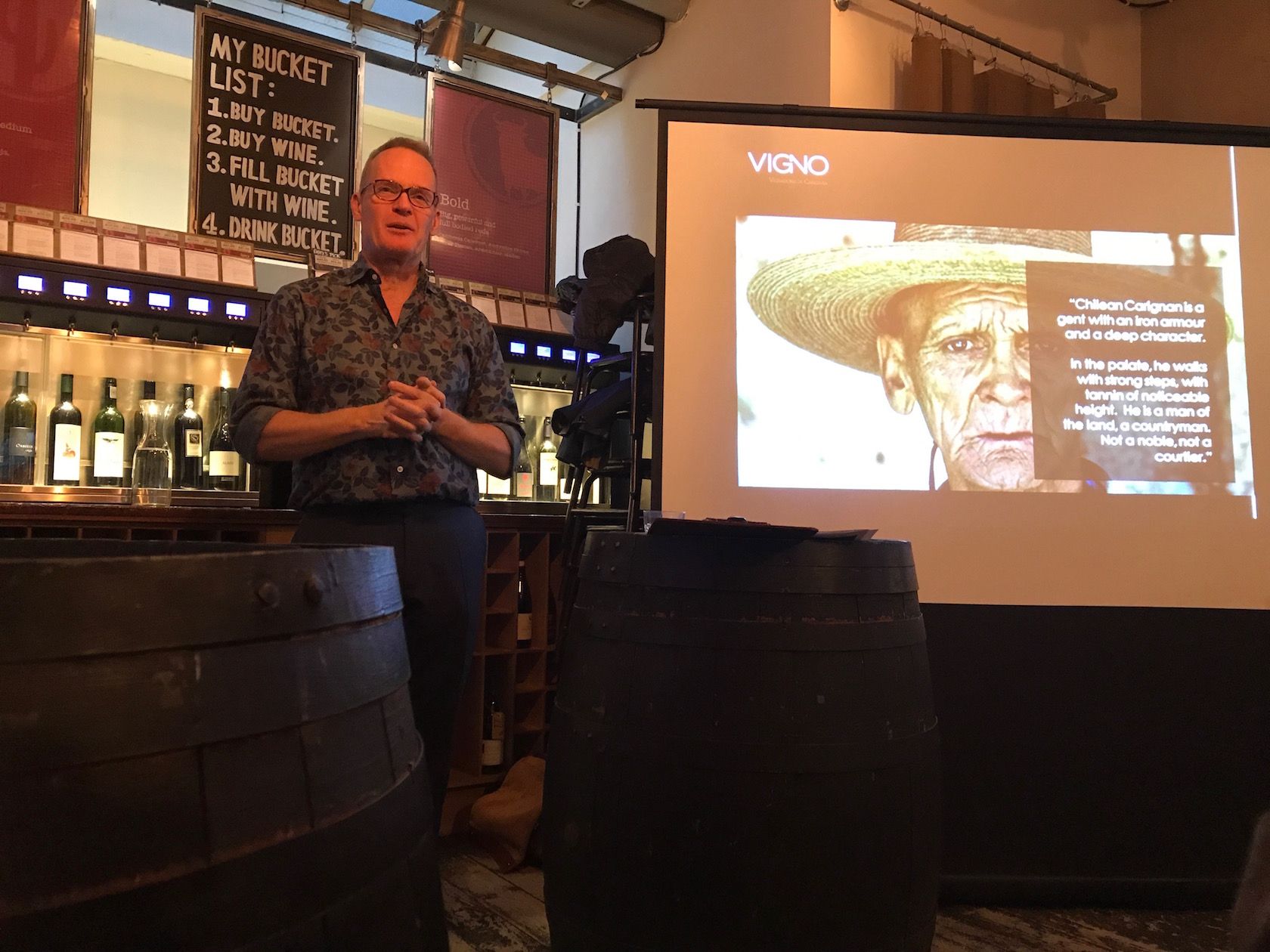VIGNO is entering its seventh year, has 16 members and operates like an appellation body that governs the production and marketing of old vine, dry-farmed Carignan in Chile’s Maule region.
You’ve got to feel sorry for some grape varieties. While Chardonnay, Sauvignon Blanc, Cabernet Sauvignon and Merlot get all the breaks – swan around like school swots, basking in everyone’s attention, privy to the best kit, always at the top of the class, getting perfect scores – other varieties are like recalcitrant teenagers, misfits, that are called different names and no one wants to be seen with.

“Blending’s too good for them!”
Governments even subsidise farmers with good money to rip these varieties out of the ground and start afresh.
Carignan is one such grape – over-produced, over-tannic, over-concentrated and over here – a variety that was once France’s most planted grape, got a bad rep and is now, for the most part, avoided as a single varietal, except for hairy men eating saucisson in the afternoon sun or hairy men smoking pipes in Shoreditch. It’s never going to edge out pink rosé that’s for sure.

Carignan has often played to its strength and muscularity
The strengths of Carignan – high acidity, tannin and yield – proved to be its undoing and it was consigned to being a bulk, blending grape. Carignan can produce four times the yield of your average Cabernet Sauvignon, it is late ripening and can grow in very arid, sandy conditions – all potential positives that, over time and the way it was farmed, have become negatives.
But what goes around comes around. Carignan is starting to get some good press and, like Clairette and Cinsault, is starting to get appreciated by a younger generation with different palates and agendas.
Hell there’s even a ‘guerilla movement’ called Carignan Renaissance to get the grape better understood.

Canny wine buyers, of course, have always been aware of Carignan’s potential as a single varietal, especially from old vines: Monsant in Spain; the Languedoc in France where Domaine D’Aupilhac has upheld its reputation; and Sardinia’s Cantina Santadi whose Terre Brun and Rocca Rubia are delicious and cheap – £29 today will buy you a 29 year old bottle of Rocca Rubia and it will still be drinking.
Which brings us to Chile and VIGNO
In 2011 VIGNO, or Vignadores de Carignan, to give it its full name, was formed to preserve and celebrate old vine Carignan in Chile’s Maule, a region hit by the earthquake of 2010.
Carignan has quite a history with Chilean earthquakes, for it was after the country’s single most deadly earthquake of 1939 that the government set about reforming the country – industrialising the country and mechanising agriculture with the first major planting of Carignan being one part.

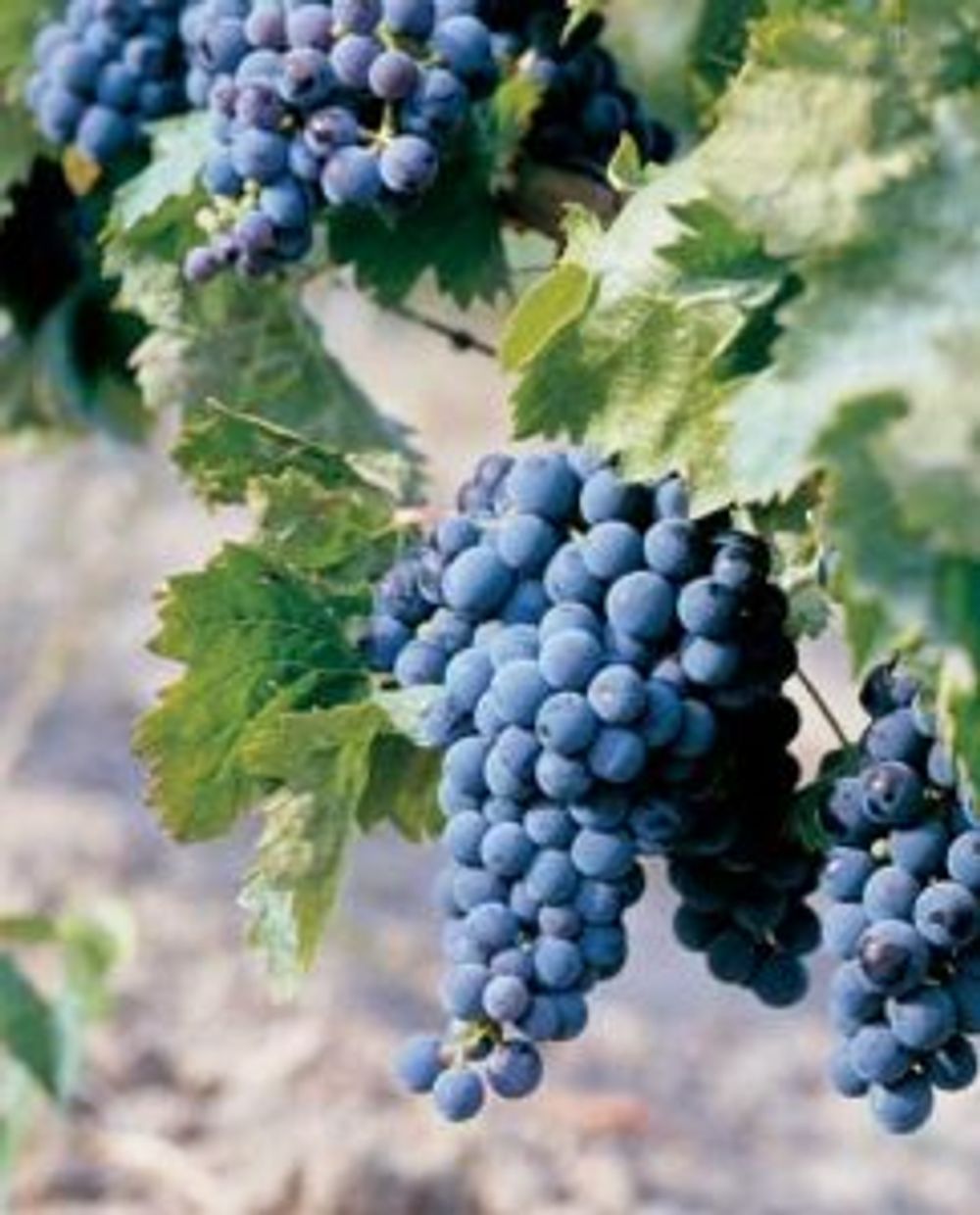
Got volume if you want it – Carignan has always been a high yielding grape
Carignan became the workhorse for the local main grape at the time, Pais, that lacked acidity, tannin and colour. Carignan is built to age, which makes it an ideal blending partner and one reason for Rioja using it where it can often make up about 10% of a blend as Mazuelo.
As time went by, however, so the yields fell from the ageing vines and wineries became more engaged with supplying the world with low cost international varieties. Except, that is, for some enterprising vignerons who saw the potential in these old vines and clubbed together to preserve them and make them a focal point of Chilean wine’s past and future.
VIGNO now numbers 16 wineries – both Davids and Goliaths – with a set of rules that could grace any DOC. The wines must be made from dry-farmed vines at least 35 years old, make up 65-70% of a blend (the other grapes also coming from the region) and then be aged two years before being released as VIGNO wines, with individual wineries’ branding reduced in significance.

Not at all shy about promoting a brand! Julio Bouchon of Bouchon Family Wines and Sophie McLean (then of Bancroft Wines) at the London Wine Fair 2016
Newest member Julio Bouchon of Bouchon Family Wines whose first 100% Carignan was made in 2015 was at London’s Vagabond (Charlotte Street) with Tim Atkin MW where the wine has just been released.
In addition to the winemaking, VIGNO is undertaking a study of over 100 producers in Maule in a zone 120 kilometres by 60 kilometres with results so far fascinating about a region that has a wide variety of soil and rock type, micro-climate, altitude and range from the sea. “Like Swartland with a coast” is how Atkin put it.
“Carignan can be rustic and angular if you want it to be – which is less nice – not dissimilar to Aglianico and Nebiolo but with a higher PH it can become voluptuous,” he added.
Putting the VIGNO wines to the taste test
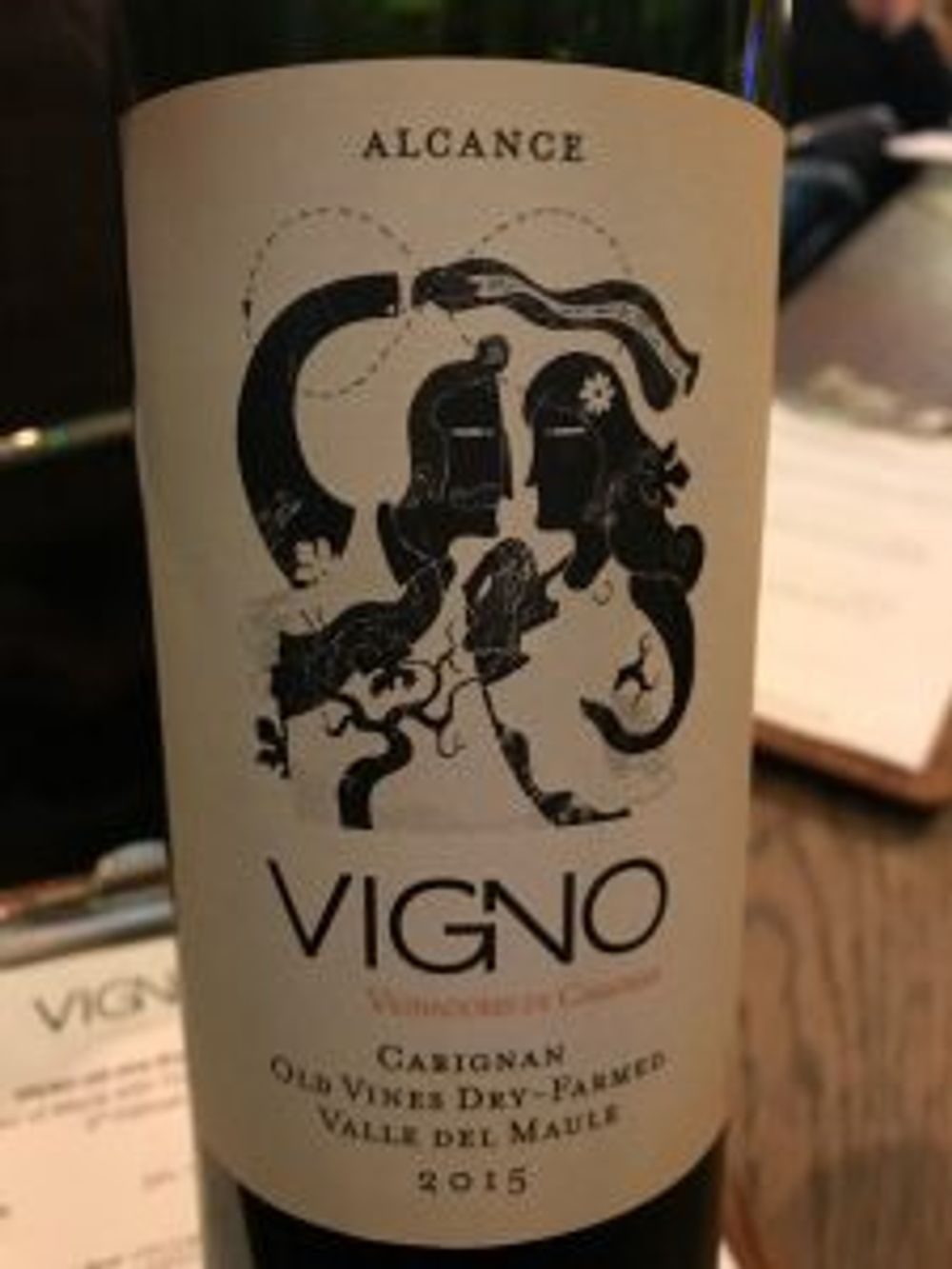
The VIGNO branding must take precedence over the winery’s branding
Not so much has changed at VIGNO in the past seven years; It has had financial support from a government that is keen to promote local provenance of agricultural products; it has pushed the price of Carignan up for growers who had got used to selling it off for peanuts; and it has welcomed new members such as Bouchon.
As far as the wines go, Bouchon explains, there has been a greater trend towards making 100% Carignan wines rather than blends and also the quality of the wines has been steadily increasing. This was a point that Atkin seconded when talking about VIGNO by Lapostolle whose quality of Carignan had changed his view of the winery itself.
We tasted 15 wines ranging in price from £13 to £55 (UK retail). Although they were all different according to variations in terroir and winemaking – picking date, blends, oak treatment – they were all extremely well made wines that would challenge anyone’s preconceptions about Carignan, especially as a single varietal wine.
Most of the wines were either 13.5% or 14.5%, were full-bodied, flavourful, acidic and surprisingly well balanced – none were over-extracted, jammy fruit bombs. They all tasted well with and without food. For me it was the freshness and balance that was so unexpected, and the staff at Vagabond had served the wines at exactly the right temperature to enhance the freshness.
Most importantly you can really taste the complexity and history of these wonderful old Carignan vines – this is a great project that can be supported in so many ways by the on-trade.
The six VIGNO wines I would recommend trying are:
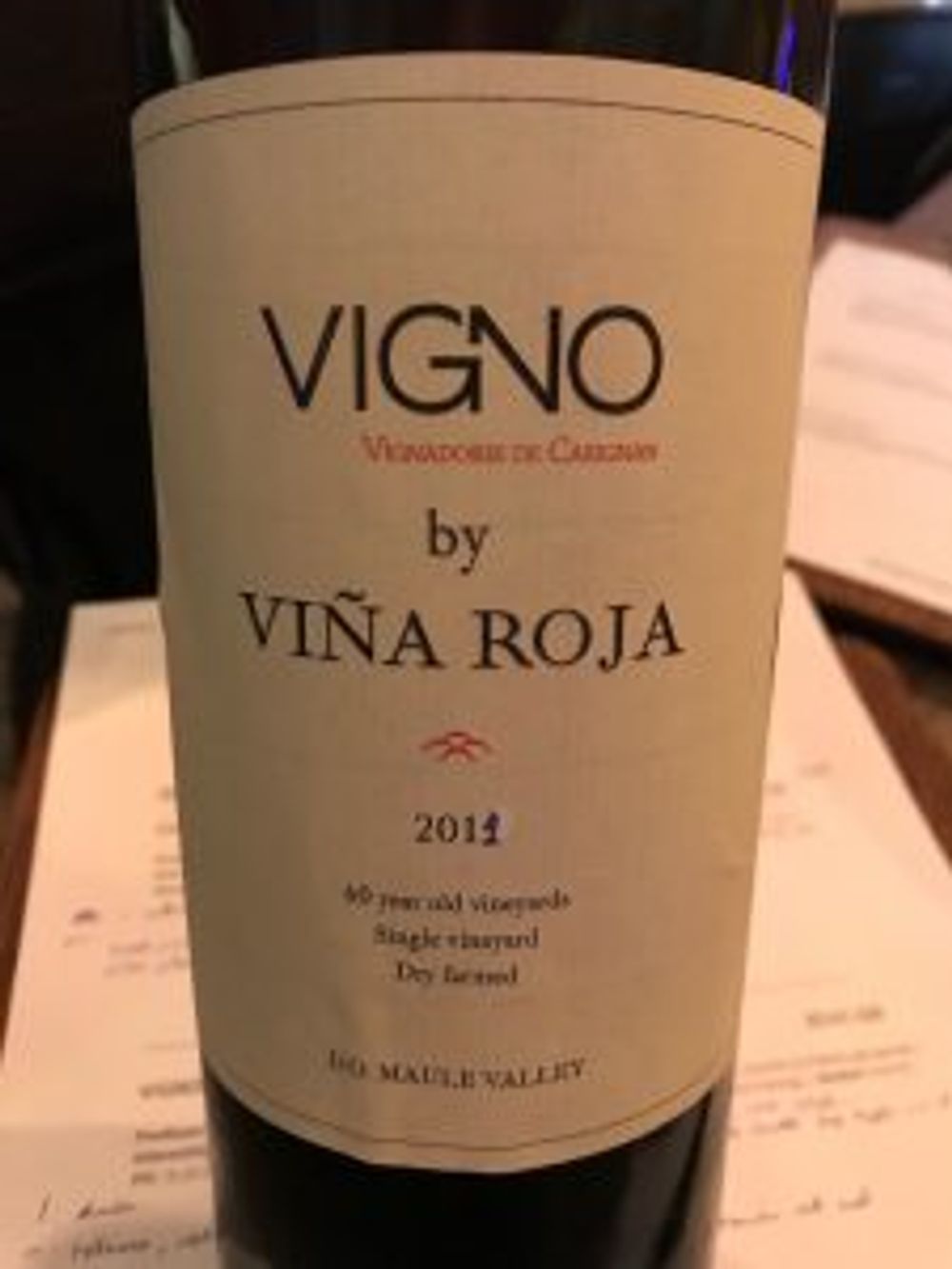
VIGNO by Viña Roja, 2011 (FMV £55 RRP)
The winery has dialled down the new American oak, although it’s still there in the texture and faint notes of wood. Paler than some, more complex, touch of reduction but what hits you is a wonderful splash of freshly squeezed black fruit. Very attractive 100% Carignan.
Eclat VIGNO, 2010 (Bibendum £21 RRP)
A 66% Carignan/ Mourvedre blend, 100% aged in French barriques. Garrigue herbs on the nose, it has black cherry fruit, grainy tannin and a wonderful length.
VIGNO by Bouchon 2015 (seeking distribution)
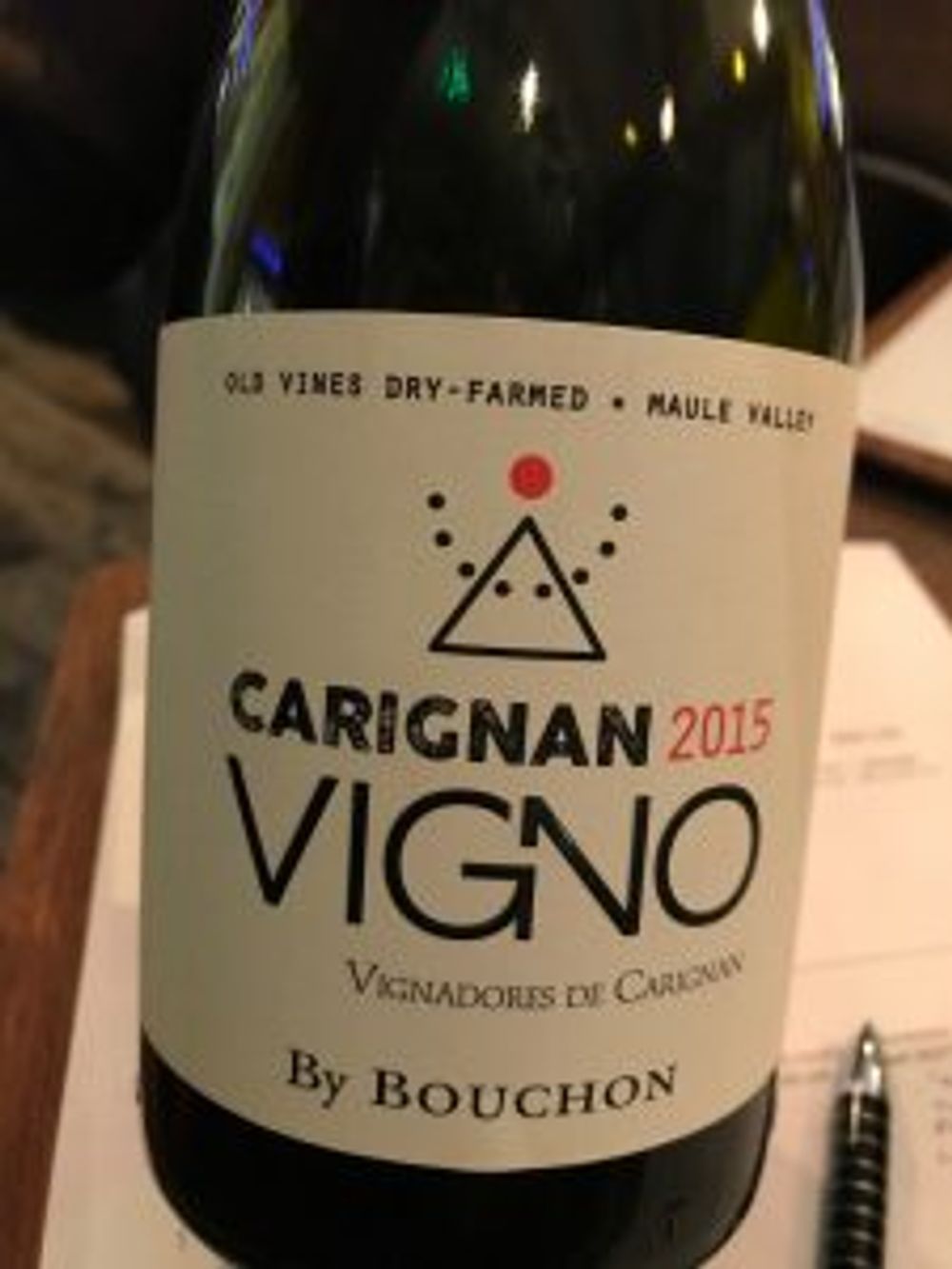
100% Carignan aged for 12 months in foudre and 12 months in the bottle, natural yeast no filtration. Wild herb, attractive nose, intense fruit on the palate with a dash of cream on the edge. The 13.3% ABV is achieved by picking 2-3 weeks earlier than most, giving this a more restrained quality. The tannins are remarkably integrated for such a young Carignan.
VIGNO by Alcance (seeking distribution)
100% Carignan from 60 year old vines 18 months aged in used oak. Slightly peppery nose, elegant, fresh, red and black cherry, good concentration. Beautifully made and very drinkable.
VIGNO by Gillmore (Naked Wines, £25.99 RRP)
100% Carignan from 60 year old vines, 18 months aged in neutral French oak, unfiltered, two week maceration before malolactic in oak barrels. One of the driest of the selection that comes in part from the terroir – only morning sun on sloped vineyards. Very fresh, with mouth-puckering tannins and well integrated oak. Quite Italian in feel.
However my favourite was………..
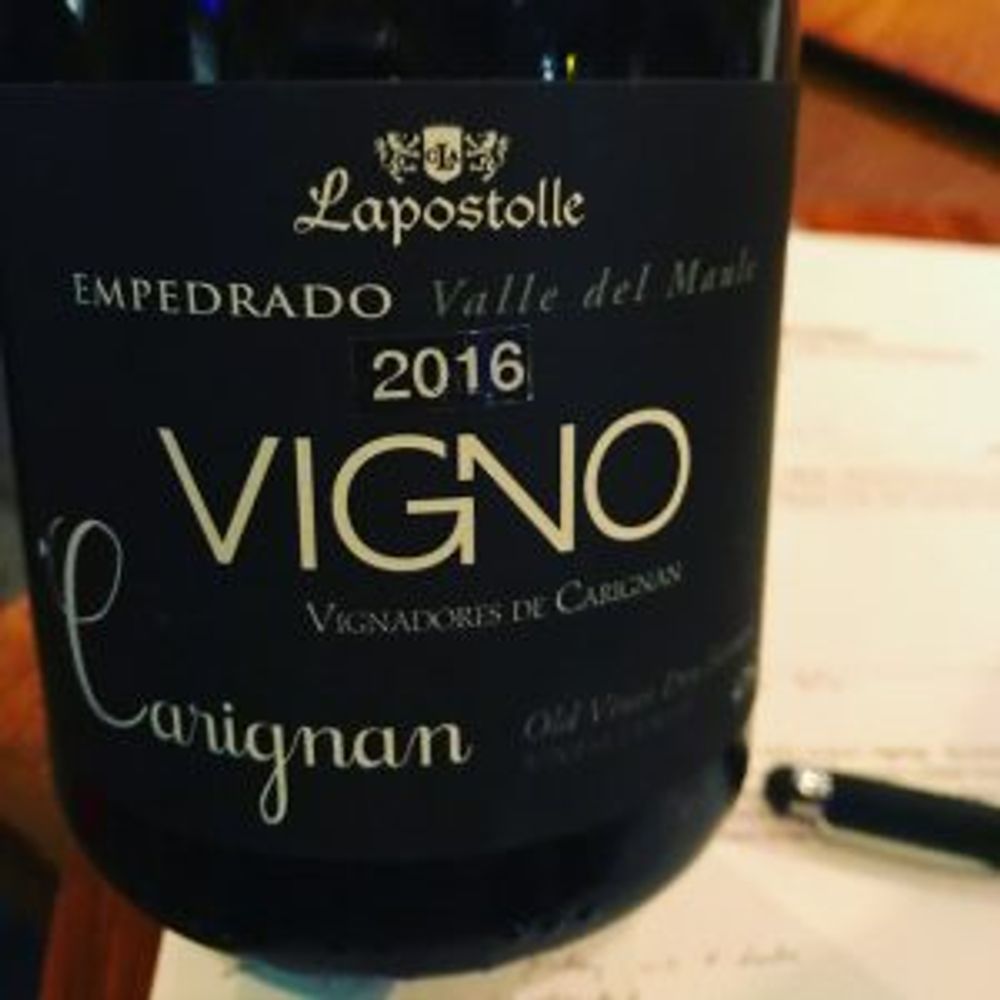
VIGNO by Lapostolle (Berkmann, £22 RRP)
This was from the cooler climat of Sauzal and the vines closest to the ocean. The fruit on the nose was more lifted and had an elegant perfume. Grapes were hand-harvested and hand de-stemmed, no crushing. Cold soak at 8C for six days, wild yeast, manual punchdown, natural malolactic, no fining or filtration.
“It’s hard to do this with Carignan,” Atkin said, “it’s great small batch winemaking that has changed my image of Lapostolle.”
